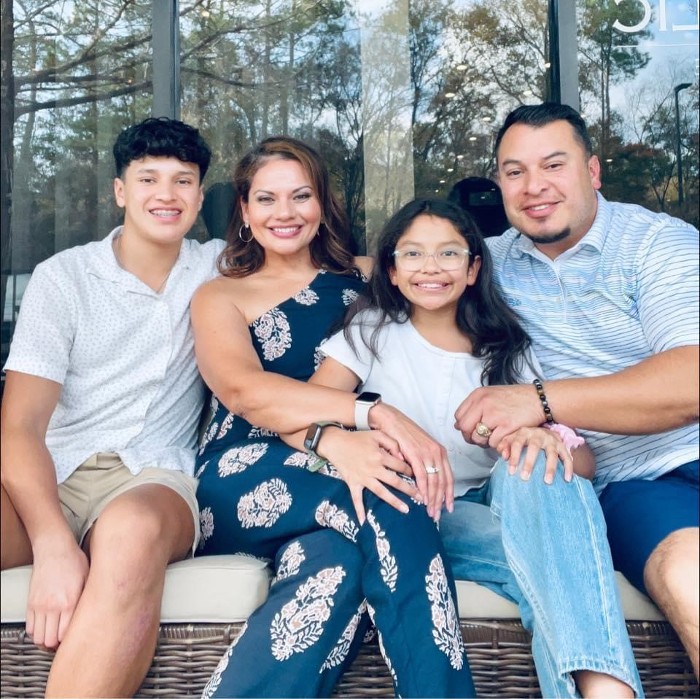
She gave birth to her first child at age 31 and her second at age 35. It was after the birth of her second child that she began experiencing severe pain in her leg.
“The pain was down on the quad area of my leg,” she says. “I remember going back to work and feeling pain when I sat at my desk and when I got up from my desk. I felt pain when walking. I had gone back to the gym to try to lose some of my baby weight, and I thought I must have pulled a muscle.”
A sports medicine doctor took X-rays and an MRI, and told her that her problem wasn’t in her leg; it was in her lower, lumbar, spine. The images showed a herniated disc—sometimes called a slipped disc—which was impinging on a nerve, causing the pain to radiate down her leg.
When another doctor confirmed the diagnosis and told her she needed surgery, she reacted with shock and disbelief. “My son was 3 years old, and I had a newborn baby. I was young, starting a family and working. I didn’t have time for surgery,” she says. So, instead she saw several doctors and tried various treatments—epidural steroid injections, physical therapy, swimming, stretching, prescription muscle relaxants—but her pain only worsened.
“By then, the pain was radiating down my calves—down my entire leg,” she says. “It was becoming difficult to even sit. I could only stand or lie on the floor completely flat. I had to eat lying down. I couldn’t drive. I couldn’t bend over to tie my shoes; I had to ask my 4-year-old son to tie my shoes. It was heartbreaking.”
A friend who worked at Memorial Hermann Southeast Hospital referred her to the spine care program there and to affiliated neurosurgeon Joseph Hsieh, MD, head of the neurology department at the hospital. Cedillo remembers asking her friend why she would need to see a neurosurgeon, given her issue was with her back, not her head. Her friend explained that neurosurgeons have expertise in treating disorders of the spine, as well as the rest of the neurological system.
After performing a full evaluation, Dr. Hsieh recommended Cedillo undergo a lumbar discectomy, a minimally invasive procedure in which a section of the damaged disc is removed to relieve the pressure on the spinal nerves caused by the bulging disc.
“Dr. Hsieh was amazing,” she says. “He took the time to explain to me and my husband what the process was going to be before and after surgery, and what to expect. He could tell I was scared, and he would check in with me, to make sure I was doing fine. I felt heard.”
The day after the surgery, Cedillo was up and walking, pain free. “I remember saying to my husband, ‘I can walk!’ I was so amazed. I got teary eyed,” she says. “And almost instantly I could drive, eat at the dinner table with my family. By the following week, I was back at work.”
Cedillo says she would recommend people with back pain consider surgery, especially if other treatments have failed. “When people say back pain can be debilitating, it is 100% true,” she says. “You lose the contact with your family, friends and life in general. The quality of life is nonexistent due to the everyday pain. You go into this dark place.”
Ten years later, she is still pain free. She dances. She plays with her kids. She has her life back. “I am forever grateful because I was able to play with my babies, resume my life and do everything I needed to do to be a good mother for them.”